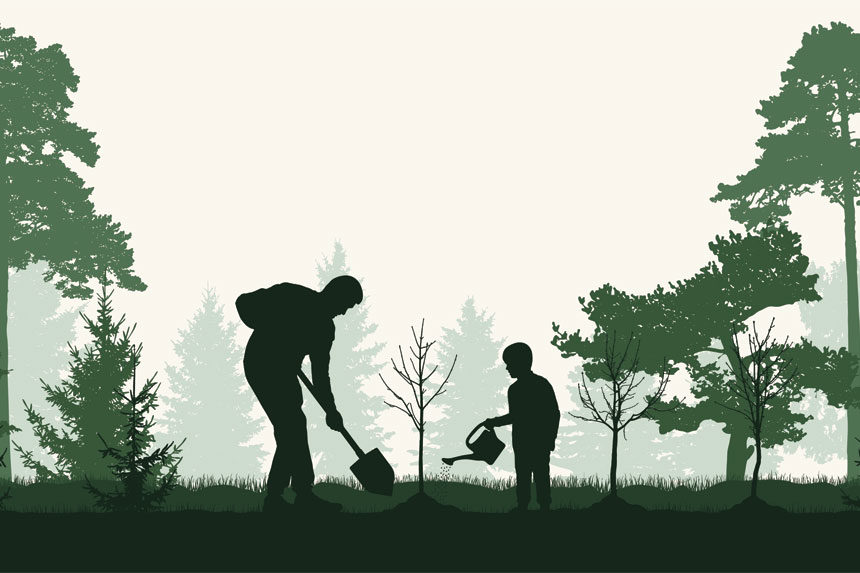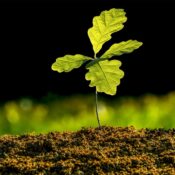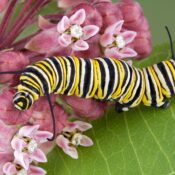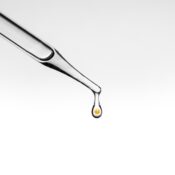Planting a tree isn’t rocket science, which is good thing. If it were that complex, I’d wager we’d have a lot fewer trees in our yards and on our streets. It may not take a scientist to plant a tree right, but a lot of money is spent each year to buy and plant trees which may as well be leased, because they will only live a fraction of their potential lifespan.
When trees decline and die after 15, 20, or even 30 years, the last thing we probably suspect is shoddy planting. Although landscape trees like mountain-ash and birch have naturally short lives, a sugar maple or red oak should easily last a hundred or more years. Yet all too often, a long-lived species will expire at twenty because it was planted “fast and dirty.” You can find examples of trees declining as an age-class in housing developments, and especially along major routes where contractors replaced older trees that were cut down for road improvements. We may as well consider such trees rentals.
Deep planting sets the stage for a sickly tree, one often headed for an untimely end. Every tree comes with a handy “depth gauge” called the trunk flare, which should be just visible above the original soil grade. Planting too deep leads to serious future health problems. For the tree, primarily. Here is an arborist joke: What do you call a yard-deep planting hole for a tree? Its grave.
Given their druthers, tree roots extend 2-3 times the branch length, or drip line, but 90 percent of them will be found in the top 10 inches of soil. To reflect this fact, a planting hole should be saucer-shaped and 2-3 times the diameter of the root system, but no deeper—ever. Otherwise, the Planting Police will ticket you. Okay, that’s fiction, but if an arborist happens to come along, she or he may scowl ominously.

When a tree is dug in the nursery, most of its roots are cut off by the tree spade used to dig it. The term transplant shock refers to this catastrophic loss of roots. Obviously, trees can survive transplanting, but they need to have the right conditions for re-growing roots. It’s essential a transplant’s roots be able to penetrate the surrounding soil, as any slight barrier can induce them to turn aside in search of an opening. Compacted soils — common along streets — as well as heavy clay are examples.
Even burlap around the root ball has been shown to cause roots to circle inside the fabric. Wire cages surrounding the burlap can last decades, and often lead to further problems as roots enlarge. Once a tree is at the right depth in the hole, remove all burlap as well as the wire cage from ball-and-burlap trees. Roots of container-grown trees need to be teased out straight. If necessary, cut them to do this. Over time, circling roots increase in diameter and constrict one another. Some eventually become girdling roots which strangle the trunk, either partially or wholly, below the soil line, and stress symptoms like early fall color and twig dieback appear.
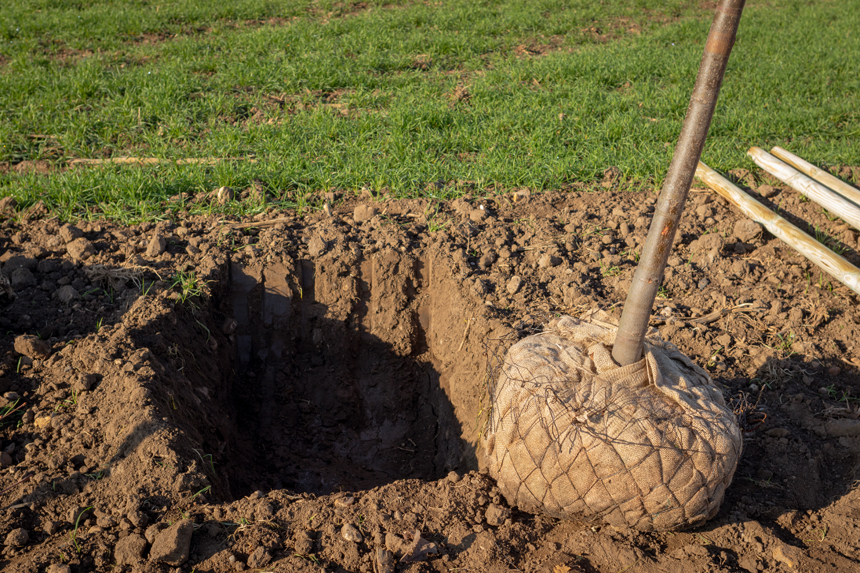
Selection is important. Like kids, trees look cute when you bring them home from the nursery, but they can grow fast and take up more room than you expected. If a site is under wires or has restricted space for branches, you need to pick a species and variety that can grow full-size without causing conflicts. Always check with your municipality for guidelines on planting near roadways, and for the number to call to have someone mark underground utilities before digging.
Choose a tree hardy to the area, as not all stores carry trees well-suited to our climate. And not all trees have sunny dispositions. Maples can stand a bit of shade, but a shaded crabapple may get crabby. Finally, trees such as hawthorn, hackberry, and Kentucky coffeetree have aesthetic interest in dormancy, a consideration if you have long winters.
For years, I have passed along the nugget that smaller transplants will embarrass larger ones by overtaking them within a few years, and that unless you’re older than ninety, it’s best to avoid the lure of an instant forest in your landscape. Smaller trees will continue to thrive better than the big guys planted at the same time, even after they win the altitude race.
Adding gobs of organic matter to the backfill likely dates back to ancient times, when people would sometimes grab an arborist, if one was handy, and throw them in the planting hole. Possibly in response to this, most arborists today recommend little or no additional organic matter in native soils with reasonably good fertility.
However, in cases where soils are exceptionally poor such as in urban sites, up to 30 percent by volume of organic matter can be thoroughly mixed with the soil from the planting hole before backfilling. A higher percentage can cause a “teacup effect,” meaning it will fill with water and fail to drain properly. This will lead to root suffocation. Fertilizer is stressful on new trees, so wait at least a year on that. In healthy soils, trees may never need commercial fertilizer.
Water as you backfill, prodding the soil with a stick or shovel handle to eliminate large air pockets. Unless a site is very windy it’s best not to stake trees — they need movement for strong trunks to develop. Two to three inches of mulch over the planting area (not touching the trunk) will help conserve moisture and suppress weeds.
With the same amount of cost and effort, it’s possible to plant a specimen your great-grandchildren can point to with pride. Or one can plant an identical tree which fizzles out before the kids are grown. It’s just a matter of attending to a few details. No rocket science, fortunately.
Paul Hetzler has been an ISA-Certified Arborist since 1996. He gets nervous around planting holes.
Become a Saturday Evening Post member and enjoy unlimited access. Subscribe now
